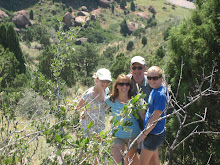Friday, March 12, 2010
An unforgettable memoir about the people who will now forever be remembered
The Late Homecomer: A Hmong Family Memoir. 978-1-56689-208-7. Kao Kalia Yang. 2008. Minnesota Book Awards- Memoir & Creative Nonfiction and Reader’s Choice. Ages 14-up. Non-fiction memoir. Poverty- level Hmong extended family. New American Immigrants.
In this memoir, Kao Kalia Yang tells the exodus of her paternal grandmother and her extended family from their home in Laos to the United States. Yang’s story begins in the jungle of Laos during the aftermath of the Vietnam War. The family flees through the jungle, crosses the dangerous Mekong River, and arrives in Thailand to escape the imminent threat of death by soldiers who intend to kill the Hmong who supported the United States during the “Secret War.” The family spends over six years in Thailand’s Ban Vinai Refugee Camp, during which time the author was born. Her family decides to immigrate to the United State, first moving to a transition camp, where they learn English and go to school, before flying to the United States to settle in California and Minnesota in 1987. The second half of Yang’s account describes her experiences in America. The author writes about the separation of her extended family, her struggle to find her own voice in English, and the challenges that face her immigrant family as they adapt to their new lives in America. Although the adults feel fortunate to be in America, Yang describes the substandard housing, the menial jobs, and the education struggles her family endures. Yang’s recollections end with stories told by her grandmother and her own reflections as she graduates from college and looks forward to sharing not just her family’s, but also her people’s experience, through the words of this book.
Children who read this book could enter a dialogue about the values of different peoples and cultures in the world. Young people could specifically discuss similarities and differences between the American culture and the Hmong culture to develop an appreciation for the strengths and values in both cultures.
The Hmong American experience described in this first-person account by author Kao Kalia Yang can not be replicated by any secondary source or textbook to show the Hmong’s rightful place in the history of the United States. Readers come to feel the fear as the family hides in the jungle from those who would like to eradicate them for supporting the U.S. They also share the heartbreak of this family, separated from one another at many points along the journey. They see in the determination of the grandmother to keep her large family intact. The real settings of the jungle, the refugee camp, the transition camp, and Minneapolis are integral in reflecting the long journey of the family to find a place to call “home.”
Perhaps the best element of this memoir is the interweaving of Hmong culture, beliefs/traditions, and stories give readers a sense of who the Hmong are as a people. Yang shares the Hmong’s value on the collective good through her family’s meetings about when they move and how to be better people in America. Readers begin to understand the Hmong belief in the eternal connections with their families long before and after an individual’s life through description of babies choosing the family and the emphasis on Yang’s mother keeping the cloth given to her by her mother. The very essence of this memoir is to preserve the folklore of Yang’s grandmother because of the Hmong’s oral, not written, tradition.
The theme of searching for a home to call your own resounds in the pages of this novel. While other immigrant experiences may be similar to his people’s journey to America, the Hmong journey is also harder because this is a betrayed, forgotten people without a homeland of their own, who receive little recognition when they arrive in America. Additionally, the themes of the importance of family is pervasive as Yang includes many of the background stories of her extended family: her parents’ unusual courtship, her uncle’s harrowing journey to rejoin them in Thailand, and the pride of her grandmother in bringing so many people into this world. The theme of hope and salvation is present in the story as the family transforms from a hunted people to contained outsiders to free citizens in America.
This book could used in an American Government class during a discussion on the process of immigration into America. Students can also use this in an American or World History class to gain an appreciation for the role of the Hmong people during “The Secret War” within the Vietnam War. It can lead students to understand the devastating effects war can have on entire populations. Alternately, this may encourage a class to find first-generation immigrants in an effort to preserve their stories before the stories are lost. To relate this book to their own lives, students could find their own immigration stories by obtaining photographs, doing research, and writing a mini-memoir of their own families’ journey to America or current location.
Subscribe to:
Post Comments (Atom)

Nancy, Thank you for two more wonderful reviews-of Hugo and Late Homecomer. You capture the magic and the meaning in these books and go beyond to offer all of us the benefits of your research locating opportunities for us to "meet" the authors through video. Bonnie
ReplyDelete